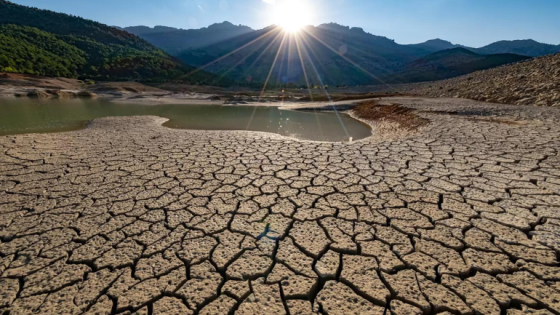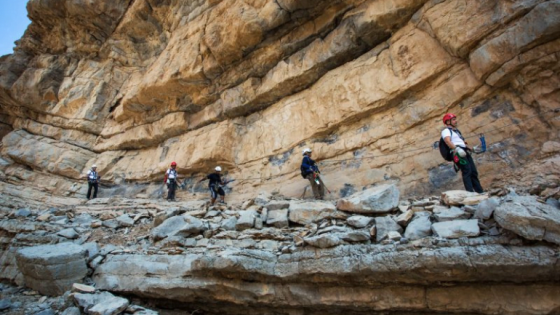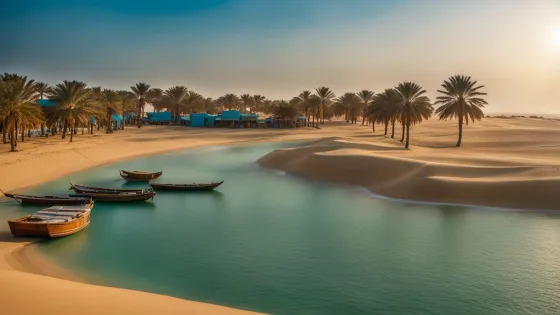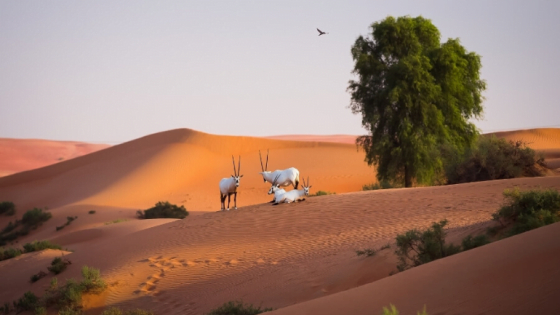Contents
- 1 UAE Soil Conservation
- 2 UAE Conserve its Soils: Lessons from China
- 3 Soil and Ecosystem Services UAE
- 4 UAE Soil Threats
- 5 Emirates Soil Museum
- 6 UAE Global Action to Handle Soil Degradation
- 7 UAE Soil Conservation Practices and Desertification Efforts
- 8 Temperature and Moisture Regimes of the Emirate Soils
- 9 Importance of the United Arab Emirates Soils
- 10 Soil Health Cards Scheme to Empower Farmers
UAE Soil Conservation is critical because of the hyper-arid desert climate, in which evapotranspiration outnumbers precipitation. The moisture regimes of Aridic (L. aridus, dry) and Torric (L. torridus, hot) have been identified. The soils are predominantly sandy “Entisols,” which are very susceptible to wind erosion, resulting in the loss of fertile soil and organic matter and exposure to hard pans. These sandy landscapes require attention for conservation to provide ecosystem services. Wind erosion is thought to be the most significant cause of land degradation. Other markers of land degradation include soil salinisation (coastal and agricultural land), plant root exposure, surface armour layer loss, and loss of fertile soil and organic matter.
Read more: UAE Conservation Biology: United Arab Emirates Winning Wildlife Conservation Efforts
UAE Soil Conservation
Investing in soil regeneration to reverse desertification offers far-reaching advantages beyond conservation. It is an essential opportunity for the UAE to promote genuine sovereign economic development and environmental care. Taking lessons from China’s success stories would allow the UAE to set a standard for transforming arid areas into flourishing ecosystems on a large scale, considerably contributing to the global fight to combat desertification and climate change.
The United Nations forecasts that the planet’s remaining arable topsoil could evaporate within 60 years, causing an estimated one billion people to become refugees due to soil desertification by 2050. This grim reality highlights the critical need for sovereign leaders and investors to emphasise programs targeted at reversing desertification, which will contribute to internal food security and groundwater replenishment. This is more than negotiating upcoming migratory crises; it ensures a healthy society and a solid economic future.
Read more: UAE Climatic Zones: Knowledge Portal to Dubai’s Weather
UAE Conserve its Soils: Lessons from China
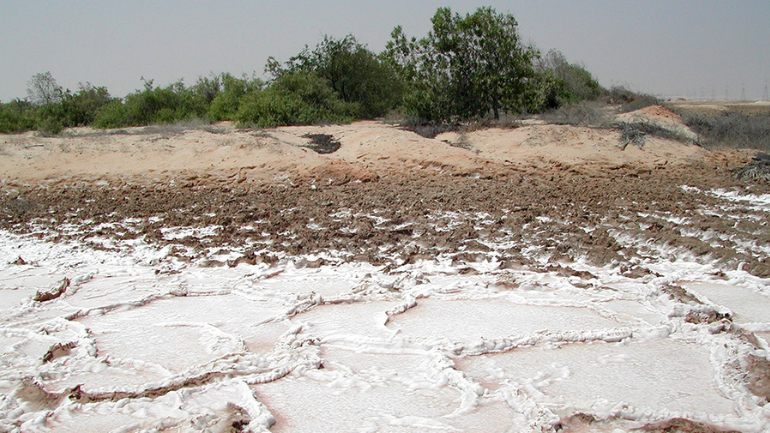
While the challenge of soil regeneration and combating desertification on a large scale seems daunting, it is not impossible. Urgent action is essential, yet there is hope that mankind will respond soon. The UAE has a limited opportunity to emerge as a pioneer in reviving agricultural vitality within its desert expanses, borrowing inspiration from successful cases such as the change of China’s Loess Plateau, which filmmaker and ecologist John D. Liu chronicled. The transition of the Loess Plateau from a bleak desert to productive farmland exemplifies the power of determined action to reverse desertification.
For a decade, this community-led effort converted 35,000 square kilometres of desert terrain about the size of Belgium into viable agricultural land, dramatically improving the socioeconomic position of millions of people. Once plagued by poverty and famine, the region has become a beacon of Agricultural prosperity, allowing its citizens to pursue education and better livelihoods beyond the fundamental struggle for existence.
This success story teaches valuable lessons to the UAE, dealing with rising heat, food instability, and water scarcity. The UAE may repair its land and soil by adopting regenerative farming approaches, stimulating economic growth and carbon reduction, improving air quality, increasing biodiversity, and promoting societal peace and stability. Future employment development and economic opportunities include ecological restoration services, agriculture, textiles, the carbon business, and ecotourism.
Soil and Ecosystem Services UAE
Save soil movement is essential in the Earth’s ecosystem, where good soils protect ecosystem services required for life (feed, fibre, food, and fuel). There are 360,000 animal species living on the earth. Soil filters water as a growing medium, shelters life (a single teaspoon of soil houses up to 1 billion bacteria and over 4000 species), cycles nutrients, is a source of critical industrial and construction materials and water conservation, and serves as a foundation for cities. Soils are intimately linked to human well-being.
UAE Soil Threats
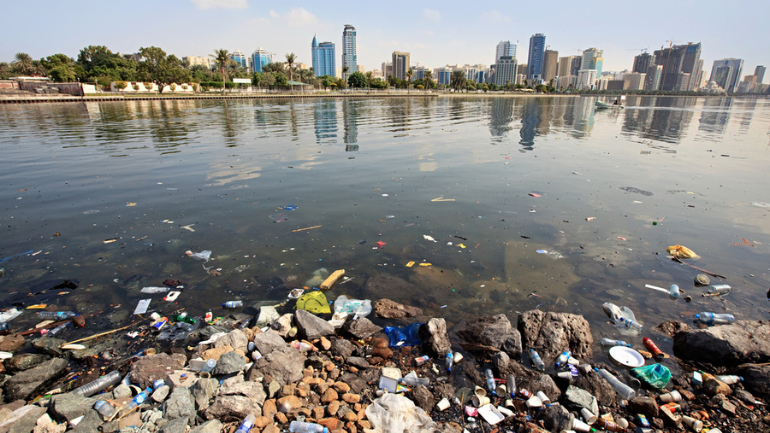
The main threats to soil in the UAE are soil erosion, salinisation, acidification, soil organic carbon loss, nutrient imbalance, soil contamination, water logging, urbanisation, and biodiversity loss. Soil threats affect food production, and 33% of land is degraded globally. Globally, 24 billion tons of fertile soils were lost to erosion in 2011. Water erosion transported 23-42 million tons of N and 15-26 million tons of Pfrom agricultural lands. Globally, over one billion hectares and 20 per cent of the soil irrigated lands are affected by salinisation.
Daily, 2000 hectares of farm soil are lost owing to salt-induced degradation. Urbanisation, especially landfills for urban trash, is consuming prime agricultural land. If soils continue to degrade at their current rate, humanity will require two Earths to sustain its lifestyle by 2030.
Read more: UAE Geography Facts: Intriguing Discoveries
Emirates Soil Museum
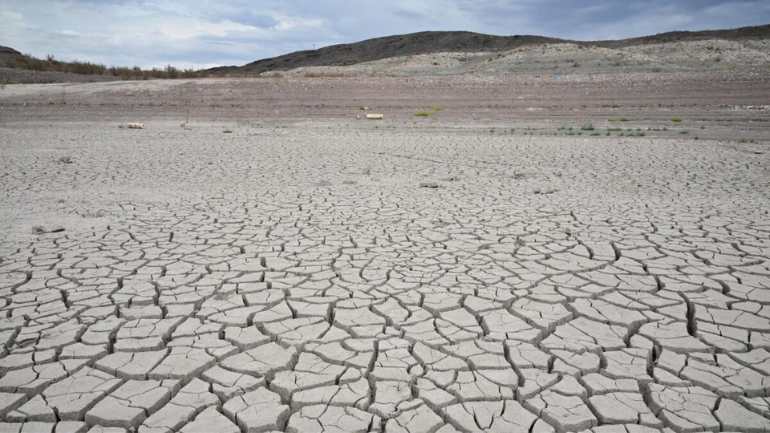
The Emirates Soil Museum opened in December 2016 with financial help from the Abu Dhabi Fund for Development. It is a one-of-a-kind facility dedicated to environmental protection and soil conservation. The museum at ICBA is devoted to the function of soils in the environment, agriculture, food security, and the various varieties of soil found in the UAE. Since its inception, it has been an information hub for anybody interested in soil conservation in the UAE and Gulf region.
Visitors to the museum can immerse themselves in the world of soils through external and internal exhibits. Outside the museum, custom-designed landscaping features various desert flora and rocks from the UAE. The exhibitions within are centred on climate change and food security issues. In addition to the displays, there are interactive simulators for dune development and water infiltration in several soil types, including sand, silt, and clay. The museum also has a library of soil information materials, and touchscreen stands where visitors can examine soil maps of the UAE.
UAE Global Action to Handle Soil Degradation
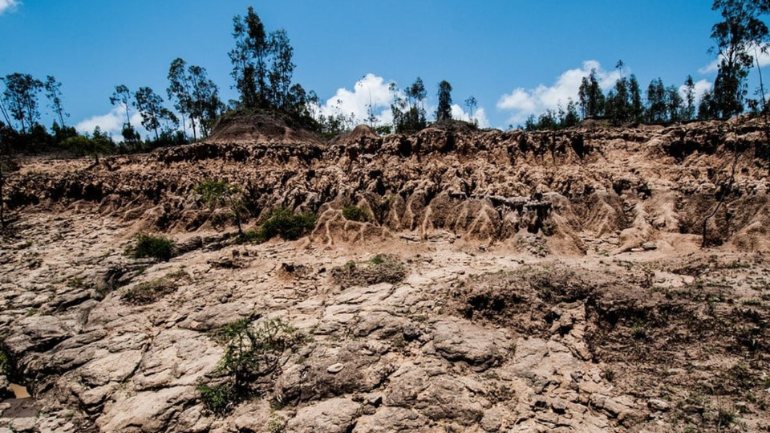
Soil deterioration is one of the most essential global difficulties for food producers. According to worldwide data, 52% of the world’s agricultural soil has somewhat deteriorated. Unsustainable human activities strain and decrease the soil’s organic content, causing soil deterioration, food shortages, water scarcity, biodiversity loss, climate change, livelihood loss, and population displacement.
Building on its active engagement in international soil protection and restoration efforts, the UAE plans to host a series of Conscious Planet Movement to Save Soil activities. Sadhguru, a global visionary, established the movement, which aims to mobilise the support of over 3.5 billion people and aid governments around the globe in developing policies that address soil health and make farming more soil-friendly to stop and reverse soil degradation. The movement advocates for a minimum of 3-6 per cent organic content in all agricultural soils.
Since its formation in 1971, the UAE has highlighted the importance of preventing land degradation as a pillar of its approach to environmental protection, natural resource conservation, and sustainable development. Over the last five decades, we have created an integrated legislative framework for environmental protection and implemented numerous programs and efforts to conserve biodiversity and battle desertification. They unveiled the National Biodiversity Strategy and Action Plan, the National Food Security Strategy, and the UAE Water Security Strategy. They are actively updating the National Strategy to Combat Desertification.
According to global estimates, soil degradation generates yearly losses ranging from US $6.3 trillion to 10.6 trillion. Affected areas include agricultural and pharmaceutical production, freshwater supply, nutrient cycling, and greenhouse gas (GHG) absorption. The most significant way to combat soil deterioration is to encourage worldwide efforts to restore soil by shading the area with flora and replenishing it with organic matter.
Read more: Embark on a Discoverable Journey Through the UAE’s Geography and Climate
UAE Soil Conservation Practices and Desertification Efforts
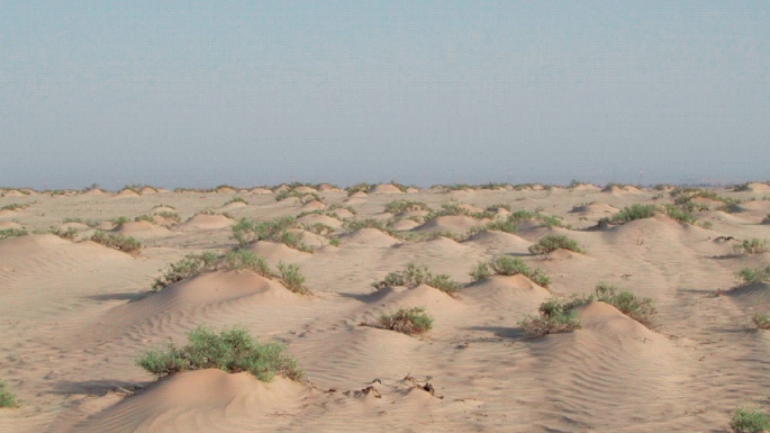
The UAE’s land resources are of high environmental value, as they support all plants and animals; clearly, a lot depends on our ability to understand, conserve, and manage the emirate’s land resources efficiently and as close to sustainability as possible, which will ultimately lead to combating desertification in the emirate. The land resources are in jeopardy due to extreme weather conditions and land degradation. The UAE has tried to fight desertification and protect land resources for ecosystem services.
Based on its environmental characteristics, the UAE takes a different strategy for desertification than other countries (FEA-UAE 2002). The UAE adopted a National Environmental Strategy (NES) to prevent desertification and prioritised areas in its strategic plans (FEA 2006). The Federal Environment Agency (FEA) has combined with the Ministry of Climate Change and the Environment (MOCCE). This chapter describes the UAE’s efforts to conserve soil and comply with the UN Convention to Combat Desertification.
Read more: UAE Climate and Renewable Energy: A Path towards Clean and Sustainable Future
Temperature and Moisture Regimes of the Emirate Soils
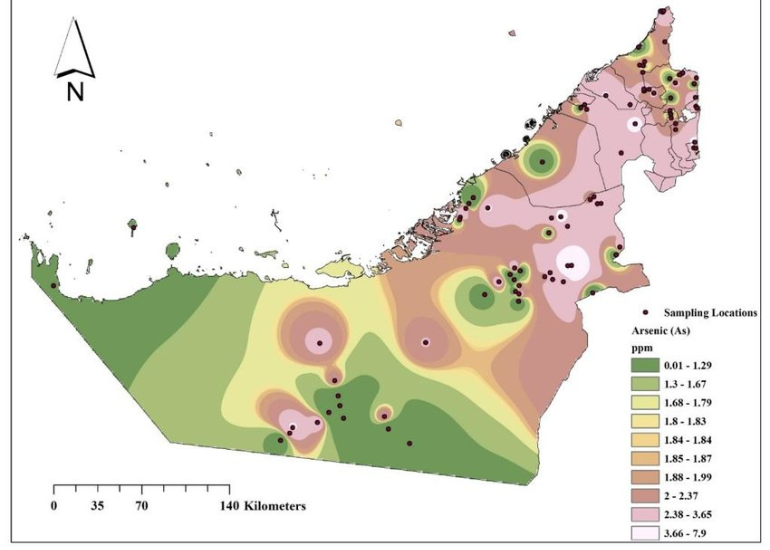
Soil moisture and temperature are significantly responsible for controlling biological processes in the soil. Each plant species has specific temperature and moisture requirements. Aridic (L. aridus, dry) and Torric (L. torridus, hot) moisture regimes have been observed in UAE soils. Both are the same, although in separate soil taxonomy categories.
Soil Moistness Regimes: Aridic and Torric (L. Aridus, Dry and L. Torridus, Hot and Dry)
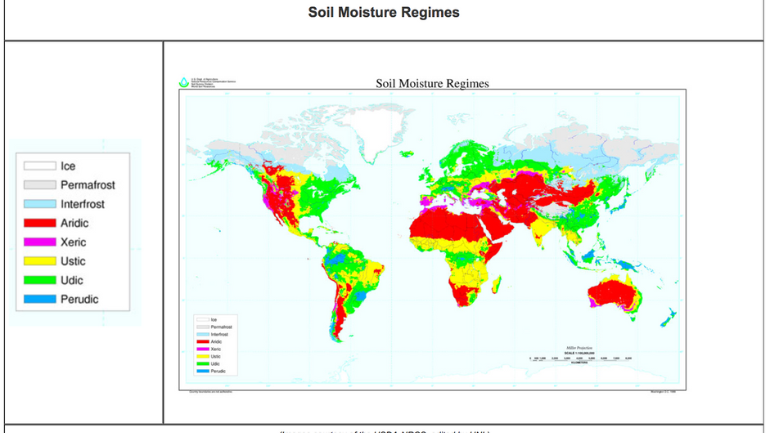
Soils with an aridic (torric) moisture regime are typically found in arid climates. A handful are located in semiarid climates and have physical qualities that keep them dry, such as a crusty surface that almost prevents water infiltration or on steep slopes with significant runoff. There is little or no leaching under this soil moisture regime, and soluble salts accumulate in the soils if a source exists.
These words refer to the same moisture regime but in distinct taxonomic groupings. In the aridic (torric) soil moisture regime, the moisture control section is, in ordinary years:
- When the soil temperature is 50 cm below the soil surface and above five °C, it is dry in all areas for more than half the total days each year.
- When the soil temperature 50 cm below the soil surface exceeds eight °C, it becomes moist in some or all portions for less than 90 consecutive days.
Hyperthermic as Soil Temperature Regime
In the UAE, a hyperthermic soil temperature regime has been identified, with soil temperatures of 22 °C or higher and a mean summer-mean winter temperature difference of more than six °C either at a depth of 50 cm from the soil surface or at a densic, lithic, or paralithic contact, whichever is shallower (Shahid et al. 2014; Soil Survey Staff 2014).
Read more: UAE Climate and Tourism: A Perfect Blend of Nature and Adventure
Importance of the United Arab Emirates Soils
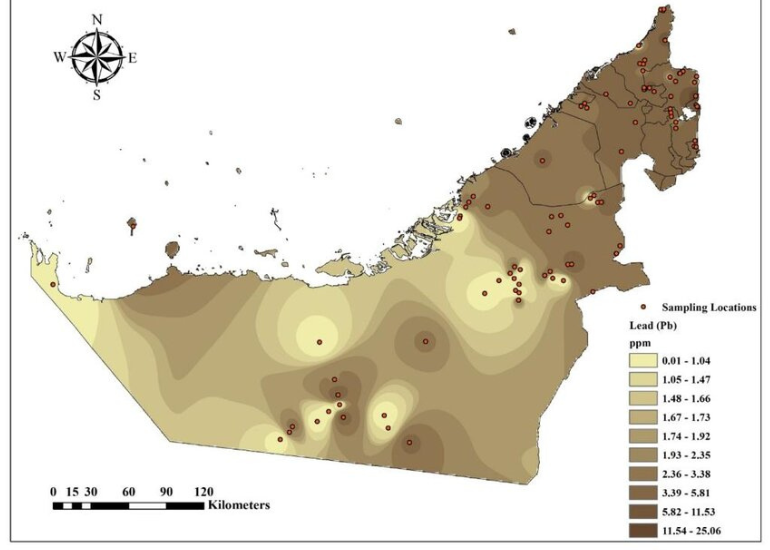
Recognising the importance of soils in a desert environment where temperatures are high, and water scarcity is a significant concern, the UAE has taken the initiative to assess soil classification and suitability for various uses (Dubai Municipality 2005; EAD 2009; EAD-MOEW 2012). Based on these soil assessments, a single soil map was developed. This soil map depicts ten soil map units based on the Great Group levels of the US Soil Taxonomy (Soil Survey Staff 2014).
The Aquisalids
These are highly saline or extremely saline, poorly drained coastal and inland sabkhas soils. These soils have high salts in their profiles, including gypsum. Despite groundwater (within 1 meter of the surface), the high salinity causes these soils to be physiologically dry, limiting vegetation to salt-tolerant species; these places are devoid of vegetation at extreme salinity levels. Textures are predominantly loamy or sandy. It covers 218,186 hectares, approximately 3% of the UAE. They are deemed permanently unsuitable for irrigated agriculture due to near-surface saline groundwater and high salt levels.
The Calcigypsids
Calcigypsids accumulate both calcium carbonate (CaCO3) and equivalents (calcic horizon) and gypsum-CaSO4·2H2O (gypsic horizon) within 1 meter of the soil surface. The majority of these soils are sandy. They cover 14,181 hectares or around 0.2% of the UAE. Because of the high soil gypsum content, they are unsuited for irrigated agriculture.
The Haplocalcids
Chaplocalcids accumulate calcium carbonate (CaCO3) and equivalents within 1 meter of the soil surface (calcic horizon). The textures are sandy or loamy. They cover 118,861 hectares or approximately 1.7% of the UAE. They offer a moderate potential for irrigated agriculture.
The Haplocambids
Haplocambids feature a loamy subsoil horizon similar in structure and colour to a cambic horizon. They do not accumulate enough calcium carbonate or gypsum to form a calcic or gypsic horizon. Haplocambids are ideal for irrigated agriculture.
The Haplogypsids
Haplogypsids accumulate gypsum in the subsurface. Some have sandy textures, while others are loamy. They cover 71,764 hectares or around 1.0% of the UAE. Their high gypsum content and soil depth limit their applicability for irrigated agriculture.
The Haplosalids
Haplosalid soils are essential for highly saline soils on flats in deflation or sabkha plains. Haplosalids have a salic horizon, and some have gypsum concentrations. High salinity causes physiological dryness in certain soils, limiting vegetation to salt-tolerant species. Textures are predominantly loamy or sandy. It covers 381,692 hectares or approximately 5.4% of the UAE. Their high salt concentration makes them permanently unsuitable for irrigated agriculture.
The Petrocalcids
Petrocalcids have a subsurface horizon cemented (petrocalcic) with calcium carbonate, resulting in a hardpan. Petrocalcids are typically found in level to mildly sloping settings that have remained stable for a long time. Most of these soils are sandy. This map unit covers 2196 hectares, or less than 0.1%. The hardpan’s depth limits its suitability for irrigated agriculture.
The Petrogypsids
Petrogypsids have a subsurface horizon cemented with gypsum, resulting in a hardpan. The majority of Petrogypsids are sandy, with a few being loamy. It covers 263,388 hectares or approximately 3.8% of the UAE. It has little promise for irrigated agriculture due to the shallow soil-to-hardpan depth and soil gypsum content.
The Torriorthents
Torriorthents have more than 35% gravel. They live in alluvial fans and plains near mountains and in wadis within mountain valleys. They are found farther from the mountains on alluvial plains or in wadis. They have little to no gravel in the profile. They are generally sandy, with one or more layers of loamy texture within 100 cm. It covers 62,123 hectares or approximately 0.9% of the UAE. The gravel component of the soil limits its potential for irrigated agriculture.
The Torripsamments
Eolian sands on dunes and sand sheets dominate torripsamments, the most extensive soils in the UAE. They have a sandy texture throughout. To present their distribution, they are separated into three phases reflecting the landscape relief (height of the dunes). The Torripsamments comprise 5,261,812 ha or 75.0% of the UAE. They are suitable for irrigated agriculture to varying degrees depending on the landform. Low dunes, sand plains, and sand sheets are moderately acceptable, with suitability decreasing as height and frequency rise.
Read more: The Far-Reaching Effects of El Nino on UAE Climate
Soil Health Cards Scheme to Empower Farmers
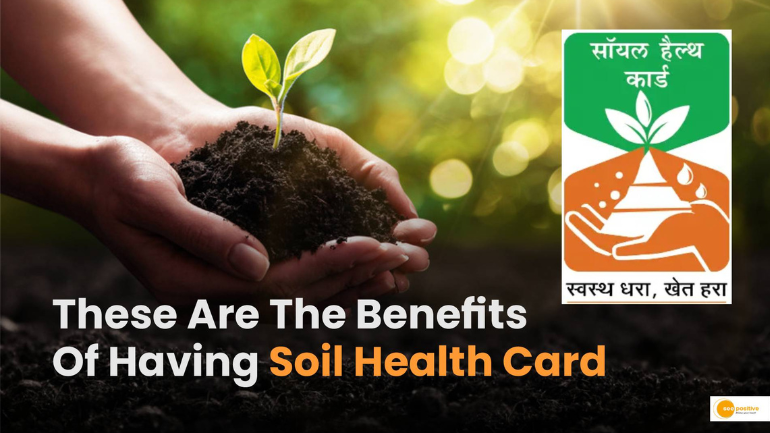
At the United Nations (UN) Climate Change Conference of the Parties (COP28) in Dubai, the Bihar government’s initiatives in soil conservation, climate-resilient agriculture, an agricultural road map, and organic agriculture received international recognition. Sanjay Kumar Agarwal, Secretary of the Bihar Department of Agriculture, addressed these activities at the India Pavilion at Expo City during a session titled ‘Actionable Ways for Sustaining Soil Health—A Key Climate Agenda’.
COP28, an annual assembly under the United Nations Framework Convention on Climate Change (UNFCCC), brings together officials from 198 parties, including 197 nations and the European Union. From November 30 to December 12, COP28 is an essential platform for tracking progress, discussing international responses to climate change, and developing emission-reduction measures.
During the soil health session, Mr Agarwal discussed several efforts detailed in Bihar’s agriculture roadmap, particularly emphasising green, organic, and sustainable agriculture and climate-resilient methods. Notable elements were the revolutionary soil health card concept, soil testing, soil fertility mapping, and Climate-Resilient Agriculture (CRA).
What is the UAE nature conservation?
The UAE has a series of regulations that provide a framework for regulating and managing waste, pollution, natural resources, and sustainable production and consumption. Environmental legislation aims to protect their natural resources for current and future generations.
What is the UAE doing to protect the environment?
The UAE is dedicated to boosting the role of low-carbon technology in the economy and investing in renewable and nuclear energy. The Ministry of Climate Change and Environment has conducted various agricultural initiatives that use soilless agriculture technologies.
What has the UAE done to improve agriculture?
The UAE has established several agricultural research centres and institutions, including the International Center for Biosaline Agriculture (ICBA) and the Abu Dhabi Farmers’ Services Center, to develop innovative and sustainable agricultural practices tailored to the country’s unique climate.
How is the UAE conserving plants?
The government has taken proactive steps by establishing various protected areas, including national parks, wildlife reserves, and marine protected zones. These programs aim to protect vital habitats and create safe havens for endangered species in the UAE.
UAE Soil Conservation: The Emirates Global Climate Initiative with Sadhguru to Save Soil marks a significant stride in the United Arab Emirates’ commitment to soil conservation. The ‘Save Soil’ movement in Abu Dhabi, coupled with the educational efforts of the Emirates Soil Museum, is combating soil degradation externally and internally. This initiative is a beacon of hope for the global community, demonstrating that proactive and concerted efforts can save our soil.
